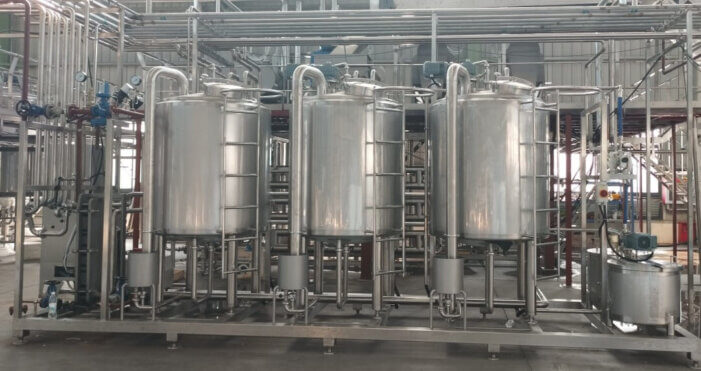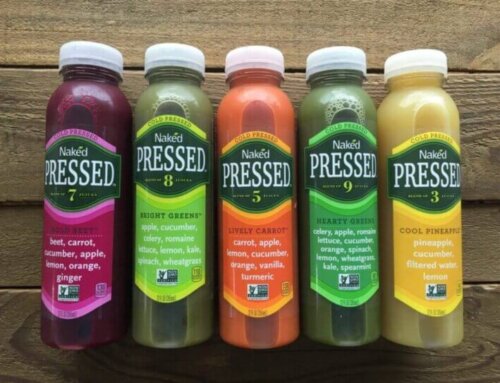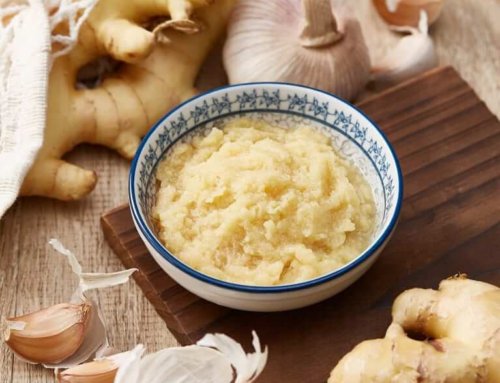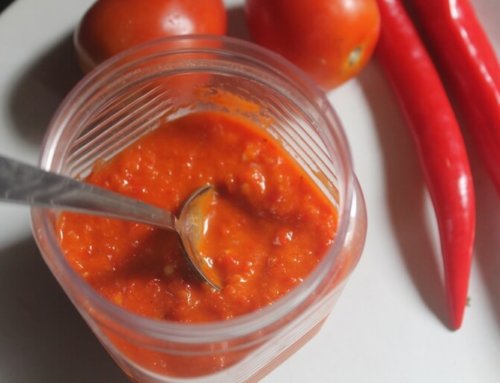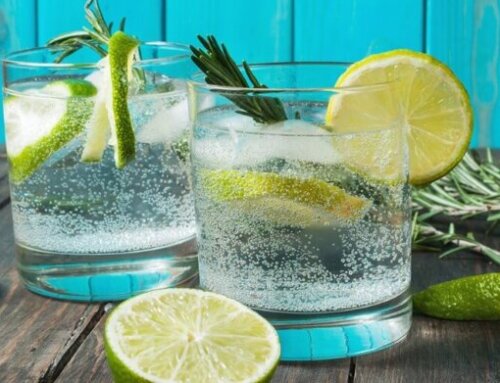Project Description
Milk Beverage Processing Line
Milk Beverage Processing Line Description
Milk-containing beverages or milk-based products are beverage products prepared or fermented with dairy products or raw milk as raw materials, adding water and appropriate amounts of auxiliary materials, after sterilizing, homogenizing and then filling into small packages.
According to customer’s requirements, we can design and formulate milk-containing beverages, milkshake beverages, smoothies, fermented milk-containing beverages, lactic acid bacteria beverages or milk-flavored beverages.
The capacity of the milk beverage processing line is available for customers to choose from 500L/H-20T/H, and the final product can be packed into cartons, PET bottles or glass bottles.
The entire production line is equipped with a CIP cleaning system to clean equipment, pipelines and storage tanks to ensure the sanitary conditions of the production line, thereby producing high-quality products.
The milk beverage processing line is composed of raw milk acceptance system, ingredients blending system, milk beverage homogenizing, sterilization/pasteurization system, fermentation system, filling system and packaging system, CIP system, RO pure water system, boiler, ice water unit and other equipment.
The raw materials in milk beverages are raw milk or milk powder, yogurt, ice cream, juice, fruit pulp, pure water, sugar, sweeteners, thickeners, cocoa powder, sour agents, emulsifiers, flavors and pigments.
Common flavored milk beverages include strawberry, banana, pineapple, apple, coffee or chocolate flavors.
The processing flowchart, machine configuration, capacity, automatic degree, raw materials and packing form is highly flexible and customizable according to clients different requirements and budget.
Classification and End Package of Milk Beverage Processing Line
Milk beverages can be filled into small containers like bottles, tin cans, cups, pouches or cartons with the 100ml-2500ml package. According to ingredients dosing, they can be divided into the following types:
Flavored milk beverages
Using sugar and (or) sweeteners, sour agents, milk or dairy products, fruit juices, food flavors, tea or plant extracts, etc., all or part of them as raw materials, the formulated milk protein content cannot reach The basic technical requirements for formulated milk-containing beverages [milk protein content (mass fraction) ≥ 1.0%], or the fermented milk protein content does not meet the basic technical requirements for lactic acid bacteria beverages [milk protein content (mass fraction) ≥ 0.7% Drinks.
Milkshake beverages
A milkshake is a creamy, sweet beverage made by blending milk with ice cream (or sometimes yogurt) and other flavorings or ingredients such as sweeteners, flavorings and fruits. It’s often thick and smooth, with a rich texture that comes from the ice cream. Milkshakes are typically served chilled and are a popular dessert or treat, often enjoyed as a refreshing snack or as a complement to a meal, especially at diners, fast-food restaurants, and ice cream parlors. The milkshake production process involves mixing milk, ice cream and other ingredients in blending tanks, then after homogenizing and pasteurizing, the milkshake will be filled into containers such as cups or pouches, then the end products will be cold storage or freezing storage for distribution.
Blended milk beverages
A beverage prepared from raw milk or dairy products, adding water, sugar and (or) sweeteners, sour agents, fruit juice, tea, coffee, plant extracts, etc. Then after sterilizing and then filling into bottles or tetra pak cartons. Milk protein content (g/kg)≥1.0.
Fermented milk beverages
It is a beverage that uses milk or dairy products as raw materials, lactic acid bacteria and other beneficial bacteria are cultured and fermented into the emulsion, then blended and prepared by adding water, sugar and (or) sweeteners, sour agents, juice, tea, coffee, plant extracts, etc., such as lactic acid bacteria milk beverages. According to whether it has been sterilized or not, it is divided into the sterilized (non-viable) type and non-sterilized (viable) type. Fermented milk-containing beverages can also be called yogurt (milk) beverages. Milk protein content≥1.0; Benzoic acid/(g/kg)≤0.03.
Lactobacillus beverage
The Lactobacillus beverage are using milk or dairy products as raw materials, and water is added to the emulsion prepared by lactic acid bacteria fermentation, and one or more of sugar and (or) sweeteners, sour agents, fruit juices, tea, coffee, plant extracts, etc. are added. The finished beverages are classified into sterilized (non-viable bacteria) type and non-sterilized (live bacteria) type according to whether they have been sterilized.
Milk protein content/% (mass fraction) ≥0.7; non-sterilized (live bacteria) type, lactic acid bacteria live bacteria index ≥1×10^6CFU/mL at the factory; sales period shall be carried out according to the number of live lactic acid bacteria marked on the product label.

Technological Flowchart of Milk Beverage Processing Line
Mixed milk beverages processing flowchart
Mixed milk beverages are made from raw milk or milk powder, then adding lactic acid or citric acid, syrup, stabilizers, flavors, pigments, vitamins or minerals, after blending with these ingredients, milk beverage is obtained, then the milk beverage will go for homogenizing, degassing and sterilizing. Then the sterilized milk beverage is filled into small bottles or tinplate cans, after filling, the packaging container is sterilized for a second time through a retort or pasteurization tunnel, and then cooled to room temperature and finally packaged in a carton or film shrink package. However, if aseptic cartons or pouches are used for filling, no secondary sterilization equipment is required.

Fermented milk beverages processing flowchart
There are two methods for processing fermented milk beverages: the first method is after the raw milk is accepted and fermented firstly, then fruit and vegetable juice, sugar, stabilizers, flavors, pigments and other auxiliary materials are added, after mixing with all ingredients, then homogenizing, sterilizing and filling into consumable packages; The second type is to formulate first, then ferment, which is to mix all the raw materials together according to the formula, after co-fermentation, and then mix by adding sugar, stabilizers, spices, etc., to homogenize the beverage.
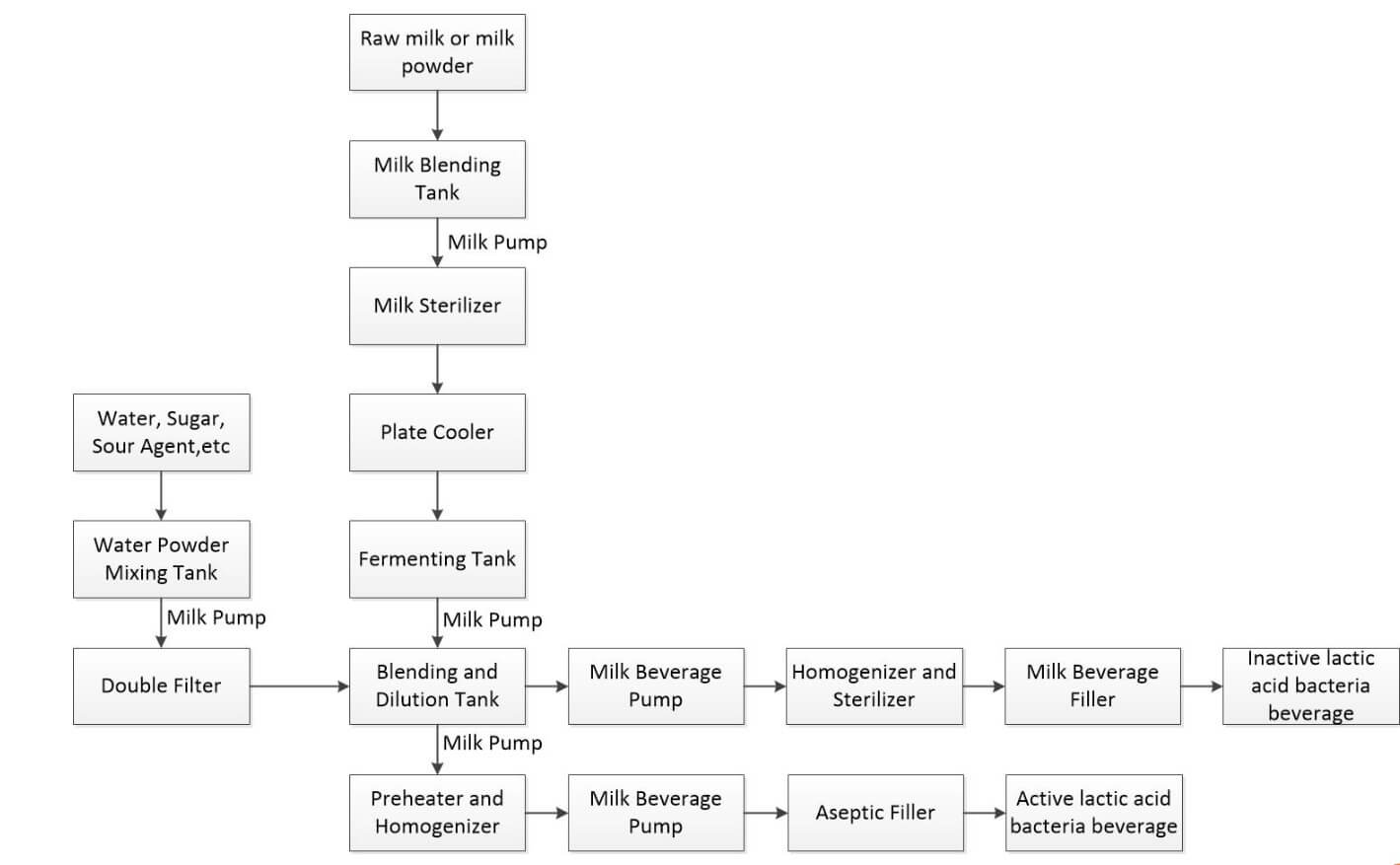
Key Machine Of Milk Beverage Processing Line
Milk beverage ingredients mixing and blending unit
The milk beverage blending system mainly consists of water powder dissolving system, RO pure water metering system, hot water generating system, milk beverage blending system.
Generally, full-fat milk powder or raw milk is used to produce milk beverages. The milk powder can be dissolved by a water powder mixer. Add a certain amount of milk powder according to the formula, and stop stirring in the tank after the milk powder is fully dissolved in the water. In addition, cocoa powder, granulated sugar and other ingredients can be added to the water powder mixer for dissolution.
The stabilizer, water, syrup, fruit and vegetable pulp, acidulant, emulsifier, etc. that have been pasteurized and cooled to about 20°C are sequentially added to the blending tank, and then the dissolved milk is pumped into the blending tank and passed through the blending tank The paddle agitator fully mixes and stirs all the raw materials.

Milk beverage homogeneous degassing and sterilization/pasteurization unit
Homogenization is a key process in the production of milk beverages. Depending on the equipment, the homogenization temperature is 50-75℃ and the pressure is 15-25Mpa. If the homogenization effect is not good, it will cause precipitation or stratification during the shelf life of the milk beverage, which will affect product sales.
The milk beverage can remove the air in the material through the vacuum degasser, ensure the product has a good color and taste, and extend the shelf life of the product. The degassing temperature is 55-60℃, the vacuum degree is 0.64-0.85kpa, frequency conversion control, can be connected to the sterilization machine.
The sterilization process is different according to the PH value and packaging containers of the milk beverage.
- If it is a neutral beverage and is aseptically filled into a carton, the sterilizer uses tubular UHT for sterilization(137℃ for 3-5S), the products with this process, the shelf life can reach 6-12months.
- If it is an acidic beverage that is filled into PET or glass bottles, it can use a pasteurization process (90-95 ℃ temperature holding for 10-15S), after the milk beverage is filled into the container, the product needs to do secondary sterilization/pasteurization by tunnel pasteurizer or retort sterilizer, the shelf life will be 9-12 months with ambient temperature storage.
- If the end-user has high requirements for the flavor and nutrition of the product, it can be pasteurized (85-98℃ holding temperature 15-25S), and it is filled into the container(bottles, metal cans or cartons) by ultra-clean filling technology. The shelf life is 7-45 days in 3-4℃ storage conditions.

Milk beverage filling unit
According to customers’ requirements for the different shelf life of products and filling containers, we can use aseptic filling, hot filling and ultra-clean filling technologies to fill materials. Generally, aseptic cartons and aseptic bags can be used in conjunction with aseptic UHT sterilizers and aseptic filling machines, this technology requires a high investment in operators and equipment, and is suitable for large and medium-sized beverage factories;
bottled milk beverages can be used with hot-filling and ultra-clean filling technology, which can also produce relatively high-quality products; Some manufacturers also use aseptic filling technology to fill milk beverage into bottles, with this technology, The production line uses 1800ppm peracetic acid to sterilize beverage bottles and caps, and rinses with sterile water to achieve sterilization effect. The entire product pipeline is sterilized by high-temperature steam, and the filling environment is filtered by high-efficiency filtration and maintained in a positive pressure state to ensure the sterility of the environment. In this way, the UHT milk beverage can be filled in a safe environment to ensure product safety, the microbial control level has also reached the high industry standard – log6 level when for aseptic filling. The shelf life of the milk beverage can reach 2 months to 9 months at room temperature according to the pH level.
tinplate cans or soft-packaged beverages are realized by hot-filling technology, but as the milk beverage is neutral drinks, so after hot filling into the containers, the milk beverage needs to do secondary sterilizing by the retort sterilizer, the sterilizing flowchart is 121℃ holding for 15-20 minutes.
CIP cleaning system
The CIP cleaning system is key to ensuring the milk beverage line is highly sanitary and produces high-quality products. The main function of the CIP system is cleaning the tanks, pipelines, sterilizers and other machines. Each shift is finished production, it will use the CIP system to clean the machines with the acid, alkali solution and pure water, the whole CIP cleaning process will take about 2 hours to finish.
